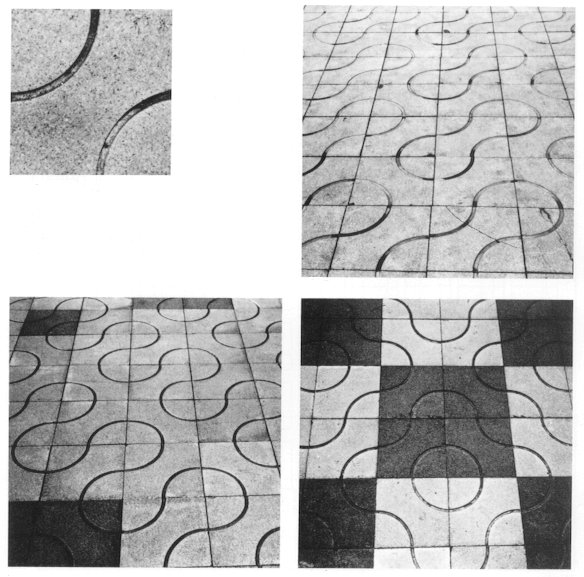|
(5) Divisions using tiles
(i) Paving stones · tiles · mosaics When we walk on a sidewalk, we may find paving stones. In older times, square and flat stones (made of the concrete) with a side of approximately 25cm were only placed on sidewalks. However, stones with colors, carving patterns, or pictures are recently being used. Various patterns are created by skillfully combining them, in order to decorate streets (Fig. 198). The outlines of some tiles have a unique shape, different from the ordinary square shape. They are created as a result of equal-shaped divisions. When we are looking at the tiles that have been pasted in a bathroom or another part of a house, we notice that pieces have been cut to facilitate fit. Such modifications are necessary and, in fact, allow us to feel more comfortable with our surroundings. That various shapes can and should be created makes us feel more content. As well, this concept should not be limited to "tiles",
but other things such as mosaics or puzzle cards. In other words, let's
try to examine unit shapes which can fill the two-dimensional spaces without
leaving spaces between the shapes (Figs. 199-202).
|
